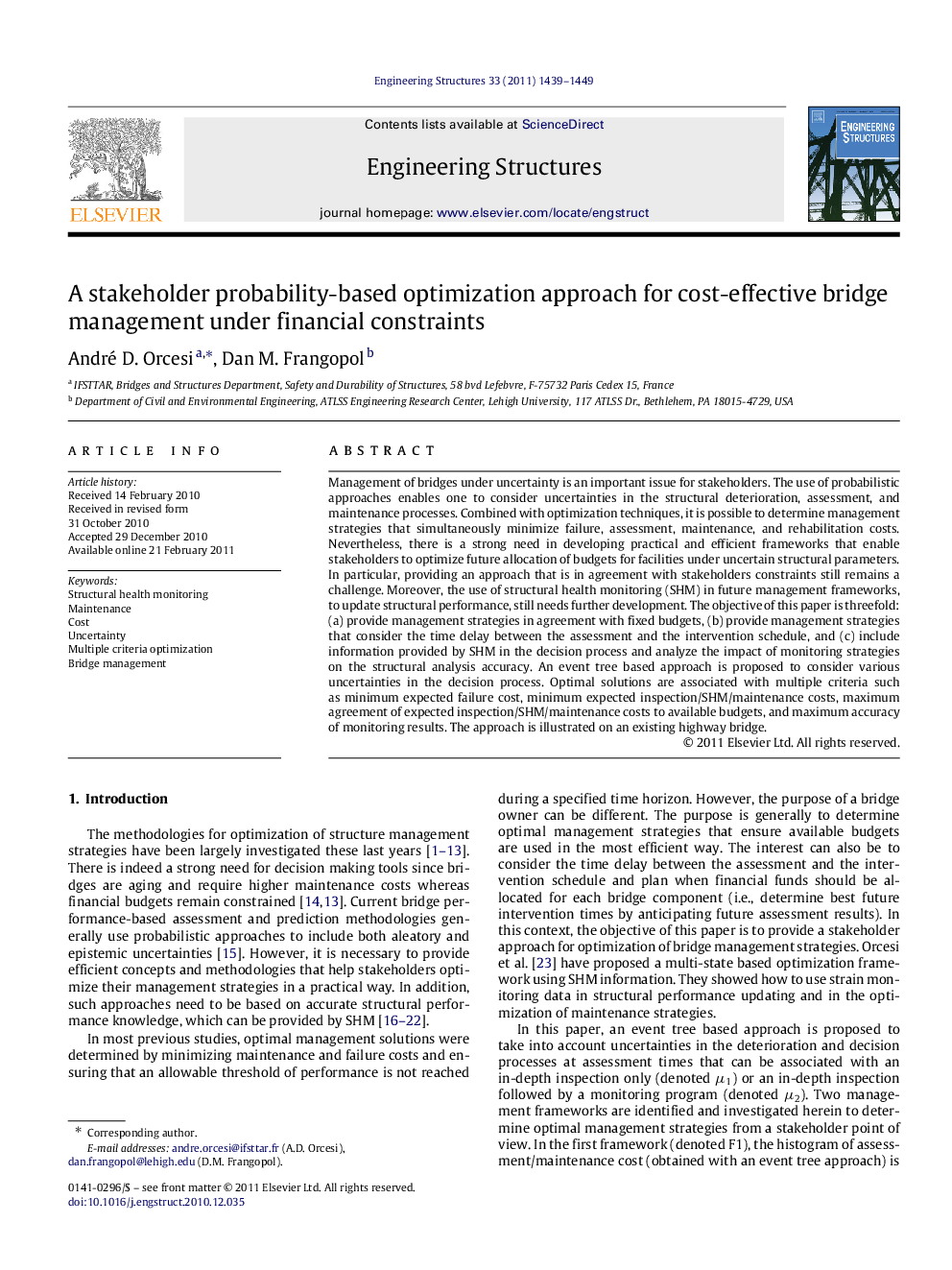| Article ID | Journal | Published Year | Pages | File Type |
|---|---|---|---|---|
| 268158 | Engineering Structures | 2011 | 11 Pages |
Management of bridges under uncertainty is an important issue for stakeholders. The use of probabilistic approaches enables one to consider uncertainties in the structural deterioration, assessment, and maintenance processes. Combined with optimization techniques, it is possible to determine management strategies that simultaneously minimize failure, assessment, maintenance, and rehabilitation costs. Nevertheless, there is a strong need in developing practical and efficient frameworks that enable stakeholders to optimize future allocation of budgets for facilities under uncertain structural parameters. In particular, providing an approach that is in agreement with stakeholders constraints still remains a challenge. Moreover, the use of structural health monitoring (SHM) in future management frameworks, to update structural performance, still needs further development. The objective of this paper is threefold: (a) provide management strategies in agreement with fixed budgets, (b) provide management strategies that consider the time delay between the assessment and the intervention schedule, and (c) include information provided by SHM in the decision process and analyze the impact of monitoring strategies on the structural analysis accuracy. An event tree based approach is proposed to consider various uncertainties in the decision process. Optimal solutions are associated with multiple criteria such as minimum expected failure cost, minimum expected inspection/SHM/maintenance costs, maximum agreement of expected inspection/SHM/maintenance costs to available budgets, and maximum accuracy of monitoring results. The approach is illustrated on an existing highway bridge.
